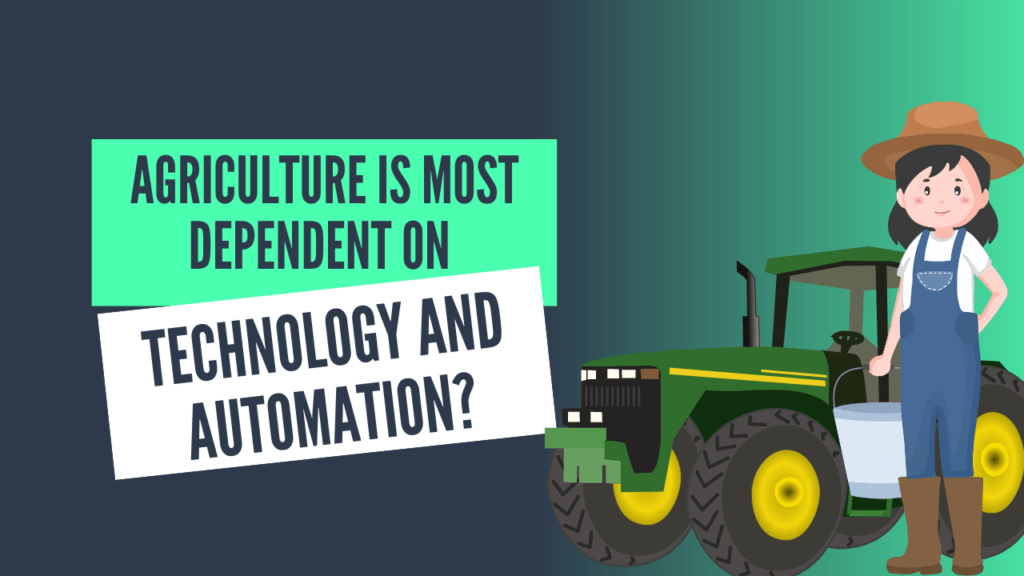In the ever-evolving world of agriculture, some methods are more reliant on technology and automation than others. But which method truly stands out? As we dive into the different approaches, you’ll discover the method that’s revolutionizing farming as we know it. This comprehensive guide will help you understand the most advanced agricultural practices, their benefits, and the challenges they face.
Table of Contents
Introduction to Technology in Agriculture
Agriculture has seen a dramatic shift over the past few decades. Traditional farming methods have given way to high-tech solutions designed to meet the demands of a growing global population. Technology and automation are at the forefront of this revolution, offering unprecedented efficiency and precision.
Why is Technology Important in Agriculture?
The incorporation of technology in agriculture has become vital for several reasons:
- Efficiency: Automation reduces the need for manual labor, allowing for more efficient use of resources.
- Precision: Advanced tools enable farmers to monitor and manage crops with pinpoint accuracy.
- Sustainability: Technology helps minimize waste, conserve water, and reduce the environmental impact of farming.
These factors make technology not just a luxury, but a necessity in modern agriculture.
You can also read about the Cloud Computing: A Comprehensive Guide for IT Professionals
Types of Agricultural Methods
There are several methods of agriculture, each with its level of reliance on technology and automation. Let’s explore some of the most common practices:
1. Conventional Farming
Conventional farming is the traditional method that relies heavily on manual labor. While some technology is used, such as tractors and irrigation systems, this method is less dependent on automation compared to others.
Key Features
- Use of chemical fertilizers and pesticides
- Manual labor for planting and harvesting
- Limited use of precision tools
Conventional farming is widespread, but it often lacks the efficiency and sustainability of more advanced methods.
2. Organic Farming
Organic farming emphasizes natural processes and minimal use of synthetic inputs. While it might seem like the least tech-savvy method, modern organic farms are increasingly adopting technology to enhance productivity.
Key Features
- Focus on natural fertilizers and pest control
- Use of crop rotation and polyculture
- Integration of technology for soil health monitoring
Despite its natural approach, organic farming is beginning to embrace technology, particularly in monitoring and managing soil health.
3. Precision Agriculture
Precision agriculture is one of the most technology-driven methods of farming. It uses advanced tools to optimize every aspect of crop production, from planting to harvesting.
Key Features
- GPS-guided tractors and drones
- Sensors for soil and crop monitoring
- Automated irrigation and fertilization systems
This method is highly reliant on automation, making it one of the most efficient and sustainable forms of agriculture.
4. Hydroponics
Hydroponics is a method of growing plants without soil, using mineral nutrient solutions in an aqueous solvent. This method is heavily reliant on technology and automation to maintain the precise conditions necessary for plant growth.
Key Features
- Controlled environment for temperature, light, and humidity
- Automated nutrient delivery systems
- Minimal water usage through recycling
Hydroponics represents the future of farming, especially in urban areas where space is limited.
Vertical Farming
Vertical farming is an innovative method that involves growing crops in stacked layers, often in controlled indoor environments. This method is at the cutting edge of agricultural technology.
Key Features
- Use of LED lighting to simulate sunlight
- Automated climate control systems
- Robotics for planting, tending, and harvesting
Vertical farming is perhaps the most automation-dependent form of agriculture, with technology playing a crucial role in every aspect of the process.
You can also check the Blockchain Technology and Big Data: Transforming the Future of Digital Information
Which Method is the Most Dependent on Technology and Automation?
Among the methods discussed, vertical farming stands out as the most reliant on technology and automation. From the controlled environment to the use of robotics, every step in vertical farming is designed to maximize efficiency and yield through advanced technology.
Why Vertical Farming?
- Space Efficiency: Ideal for urban areas where space is at a premium.
- Sustainability: Uses significantly less water and land compared to traditional farming.
- Year-Round Production: Controlled environments allow for continuous crop production, regardless of external weather conditions.
Challenges of Technology-Driven Agriculture
While the benefits of technology in agriculture are clear, there are challenges to consider:
- Cost: High initial investment in equipment and technology.
- Complexity: Requires skilled labor to manage and maintain the systems.
- Dependency: Over-reliance on technology can lead to vulnerabilities, such as system failures.
These challenges must be addressed to ensure the long-term success and sustainability of technology-driven agriculture.
FAQs.
What is vertical farming?
Vertical farming is an advanced agricultural method where crops are grown in stacked layers, typically indoors, using controlled environments and automation to maximize efficiency and yield.
How does technology improve farming?
Technology enhances farming by increasing efficiency, precision, and sustainability. It enables farmers to monitor crops closely, automate processes, and optimize resource use, leading to higher productivity and reduced environmental impact.
What are the benefits of automation in agriculture?
Automation in agriculture reduces the need for manual labor, increases efficiency, and allows for more precise management of crops and resources. This leads to higher yields, lower costs, and a more sustainable farming process.
Why is vertical farming considered the future of agriculture?
Vertical farming is seen as the future of agriculture due to its ability to produce crops year-round, using less land and water, and its potential to bring farming to urban areas, reducing the distance between production and consumption.
What are the challenges of using technology in agriculture?
Challenges include the high cost of implementing technology, the need for specialized knowledge to operate advanced systems, and the risk of over-reliance on technology, which can lead to vulnerabilities if systems fail.
